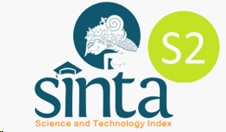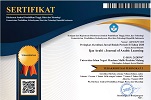Content Analysis Of The Al-Arabiyyah Lil ‘Alam Educational Series Based On Gardner's Theory Of Multiple Intelligences
Abstract
According to modern educational theories, organized intelligences are key to effective learning and practical second language instruction. Howard Gardner's "Theory of Multiple Intelligences" is one of the most prominent. The five-volume series "Al-Arabiyyah lil-'Aalam" is a significant resource for Arabic language instruction worldwide. This study evaluates the content of this series based on the comprehensive text analysis method, applying Gardner's theory. Based on a statistical sample of 985 instances, the findings indicate that the highest frequency (540 cases of intelligence) was found in the exercises section, identified as this series's primary unit of analysis. The results of the research suggest that the "Al-Arabiyyah lil-'Aalam" series, through a novel and creative approach, utilizes nine of Gardner's intelligences to enhance and improve the four language skills, making it a suitable and practical resource for teaching Arabic to non-Arabic speakers.
Keywords
Full Text:
PDFReferences
Abbasi, Zahra & Yasser Zanganeh. (2021). ‘Analysis of the Al-Arabiyya lil-'Aalim Series and the Mina Book for Teaching Arabic and Persian from the Teachers' Perspective’. Journal of Studies in Arabic Language Teaching and Learning, Shiraz University, Vol. 5, No. 1, pp. 31-48. DOI: 10.22099/jsatl.2020.37757.1100. Al-Fawzan, Muhammad bin Ibrahim. (1439). ‘Evaluation of the 'Teaching Arabic to Non-Native Speakers' Book from the Al-Arabiyya lil-'Aalim Series in Light of Good Textbook Criteria’, Journal of Educational Sciences, Issue 21, Part 3, pp. 289-338. DOI: 1658-7030. http://sid.ir/paper/518927/fa.177 Al-Ghalli, Nasser bin Abdullah. (1431). Al-Arabiyya lil-'Aalim: Book Five. Riyadh: King Saud University Press. Al-Sharida, Ali bin Majid. (1431). Al-Arabiyya lil-'Aalim: Book Two. Riyadh: King Saud University Press. Al-Shamrani, Hassan bin Muhammad. (1431). Al-Arabiyya lil-'Aalim: Book One. Riyadh: King Saud University Press. Al-Kadim, Mishaal bint Nasser. (2024). ‘Objective Tests and Teaching Arabic as a Second Language: A Case Study of the Al-Arabiyya lil-'Aalim Series’. Scientific Journal of the Faculty of Arts, Issue 57, pp. 99-114. DOI: 10.21608/jartf.2024.283958.1800. Al Maharma, Hamza mohammad ali. (2021). ‘analysis of the activities used in English textbooks regarding the multiple intelligences theory in Jordan’. Language center, the world Islamic sciences and education university, amman, Jordan. Al-Mannan, Muhammad Ata, Abdullah Al-Sheikh, Abdul Munim Othman. (1431). Al-Arabiyya lil-'Aalim: Book Four. Riyadh: King Saud University Press. Al-Oufi, Rabih bin Abdullah. (2015). Evaluation of the 'Lessons in Reading' Book for Level Four at the Institute for Teaching Arabic to Non-Native Speakers at the Islamic University of Madinah in Light of Good Textbook Criteria, Master’s Thesis, Islamic University of Madinah. Armstrong, T. (1994). Multiple intelligences in the classroom. 3nd ed, Alexandria, VA: Association for Supervision and Curriculum Development (ASCD). Bas, Gokhan. (2010). ‘Effects of multiple intelligences instruction strategy on students achivemement levels and attitudes towards English lesson’. International Electronic Journal of Environmental Education Vol. 1, Issue 1. Binet,A &Simon,T. (1916). The development of intelligence in children (E.Kit, Trans) .Baltimor, md: Williams & wilkins. Burns, A. (2009). ‘Grammar and communicative language teaching: Why, when and how to teach it?’. In CamTESOL Conference on English Language Teaching: Selected Papers (Vol. 5, pp. 9- 15). Doi: 10.5281/zenodo.3947215. Cicciola, E., Foschi, R., & Lombardo, G. Pietro. (2014). Making up intelligence scales: De Sanctis’s and Binet’s tests, 1905 and after. History of Psychology, 17(3), 223–236. https://doi.org/10.1037/a0033740. Fadl, Muhammad Abd al-Khaliq Muhammad. (1434). Al-Arabiyya lil-'Aalim: Book Three. Riyadh: King Saud University Press. Fleetham, Mike. (2017). A Guide to Using Multiple Intelligences Theory in Educational Settings, translated by Meliha Sadat Mousavi and Davood Arab Ghahestani. Tehran: Roshd Publications. http://sanad.iau.ir/journal/jsre/article/898758. Gardner, Howard. (1993). Frames of mind: the theory of multiple intelligences. newyork: basic books. Gardner, Howard. (1999a). a multiplicity of intelligences. Scientific American. 17-23. Gardner, Howard. (1999b). Intelligence reframed: multiple intelligences for the 21 century. New York: basic books. Gardner, Howard. (2013). Multiple intelligences: Jakarta: daras books. Gardner, Howard. (1983). Frames of mind: the theory of multiple intelligences. newyork: basic books. Herh sun, mah& safwanah binti azman, nur liyana .(2017). lexicology: the importance of words in society, pp1. Hutchinson, T & Torres, E. (1994) . ‘The Textbook as Agent of Change’. ELT Journal, 48 (4), 315–328. https://doi.org/10.1093/elt/48.4.315 khanh ly, cong. (2020). ‘The Importance of Grammar in Language’. Teaching and Learning.Workshop on Innovation in Language Teaching and Learning – pp186-195. Doi: 10.5281/zenodo.3947215. Penalber, martina. (2023). ‘The practice of Gardner’s multiple intelligences theory in the classroom’. journal for educators, teachers and trainers, vol. (14) 4. 62-74. http://jett.labosfor.com/ Rintaningrum, r. (2019). ‘Explaining the important contribution of reading literacy to the country's generation’. Indonesian's perspectives, international journal of innovation, creativity and change, 5(3). Sheldon, L. (1988). ‘Evaluation ELT Textbooks and Materials, ELT Journal’. 42(4), 237-246. https://doi.org/10.1093/elt/42.4.237. Shoae, M. R. A., Hosseinchari, M., Latifian, M., & Khormaie, F. (2017). Relationship between general intelligence and moral reasoning: The mediating role of moral identity. Journal of Educational Psychology Studies, 14(27), 63–86. https://doi.org/10.22111/jeps.2017.3420 Tobin, K., Capie, W., & Bettencourt, A. (1988). Active teaching for higher cognitive learning in science. International Journal of Science Education, 10(1), 17–27. https://doi.org/10.1080/0950069880100103
DOI: https://doi.org/10.18860/ijazarabi.v8i1.29144
Refbacks
- There are currently no refbacks.
Copyright (c) 2025 Faezeh Pasandi, Safoura Ghadami Hosein Abadi
License URL: https://creativecommons.org/licenses/by-sa/4.0/













